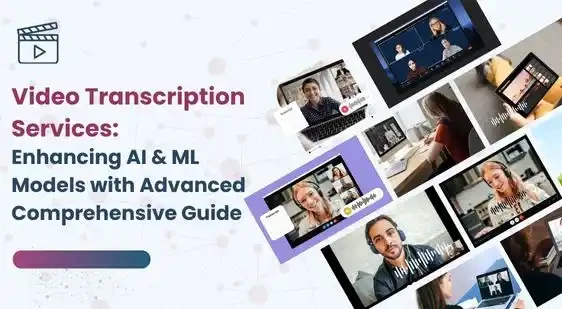As businesses increasingly rely on AI and ML models to derive insights and motorize processes, the ability to effectively analyze and understand video data becomes outstanding. In this comprehensive guide, we delve into the transformative potential of advanced video recording services in add to AI and ML models.
Traditional methods of manual annotation and analysis are gradual, effortful, and often prone to errors. This is where advanced video transcription services step in, offering automatic solutions that translate spoken words, identify key visual elements and extract meaningful insights from video content.
The Role of Video Transcription in AI and ML
Video transcription services convert spoken words within video content into written text. This seemingly sincere process is a critical first step in making video content accessible to AI and ML code, which primarily process and analyze text data.
Video transcription services play a crucial role in AI and ML:
- video data into examination text, add to AI processing and analysis capabilities.
- Improves training datasets, and benign models to learn from diverse scenarios.
- Integrates method like speaker identification and emotion detection for comprehensive analysis.
- Provides real-time insights from video content, aiding quick decision-making.
Enhancing Data Accessibility and Analysis
One of the primary benefits of incorporating advanced video models into AI and ML workflows is the significant enhancement in data accessibility.
Improving Training Datasets
AI and ML models are only as good as the data they are trained on. Advanced video transcription services can enrich training datasets by providing a diverse array of text data derived from video content. This diversity can improve the models’ understanding of different accents, dialects, and colloquialisms, enhancing their ability to process and interpret natural language accurately.
Broadening Application Horizons
The integration of advanced video transcription services opens up new avenues for AI and ML applications. In healthcare, transcribed patient-doctor interactions can help in predictive analysis and improving patient care protocols.
Overcoming Challenges with Advanced Techniques
Background noise, multiple speakers, and varying audio quality can all impact model accuracy. These technologies can adapt to different audio conditions, recognize diverse speech patterns, and ensure high model accuracy.
Ethical Considerations and Privacy
As with any technology that processes potentially sensitive information, ethical considerations and privacy protection are paramount. Robust measures like data anonymization and user consent safeguard privacy, respecting individual rights and cultural norms. video transcription services vital to address potential societal inequalities perpetuated through responsible data handling and algorithmic design. Ultimately, prioritizing fairness, transparency, and privacy protection in AI development fosters trust and societal acceptance, enabling the responsible deployment of AI technologies for the benefit of all.
Conclusion
The integration of advanced video transcription services represents a significant advancement in AI and ML capabilities. These services enable more efficient processing, analysis, and insight extraction from video content, democratizing access to advanced AI capabilities. By incorporating model services into workflows, businesses can unlock opportunities for innovation, efficiency, and growth. The scalability and cost-effectiveness of these solutions make them accessible to businesses of all sizes.







